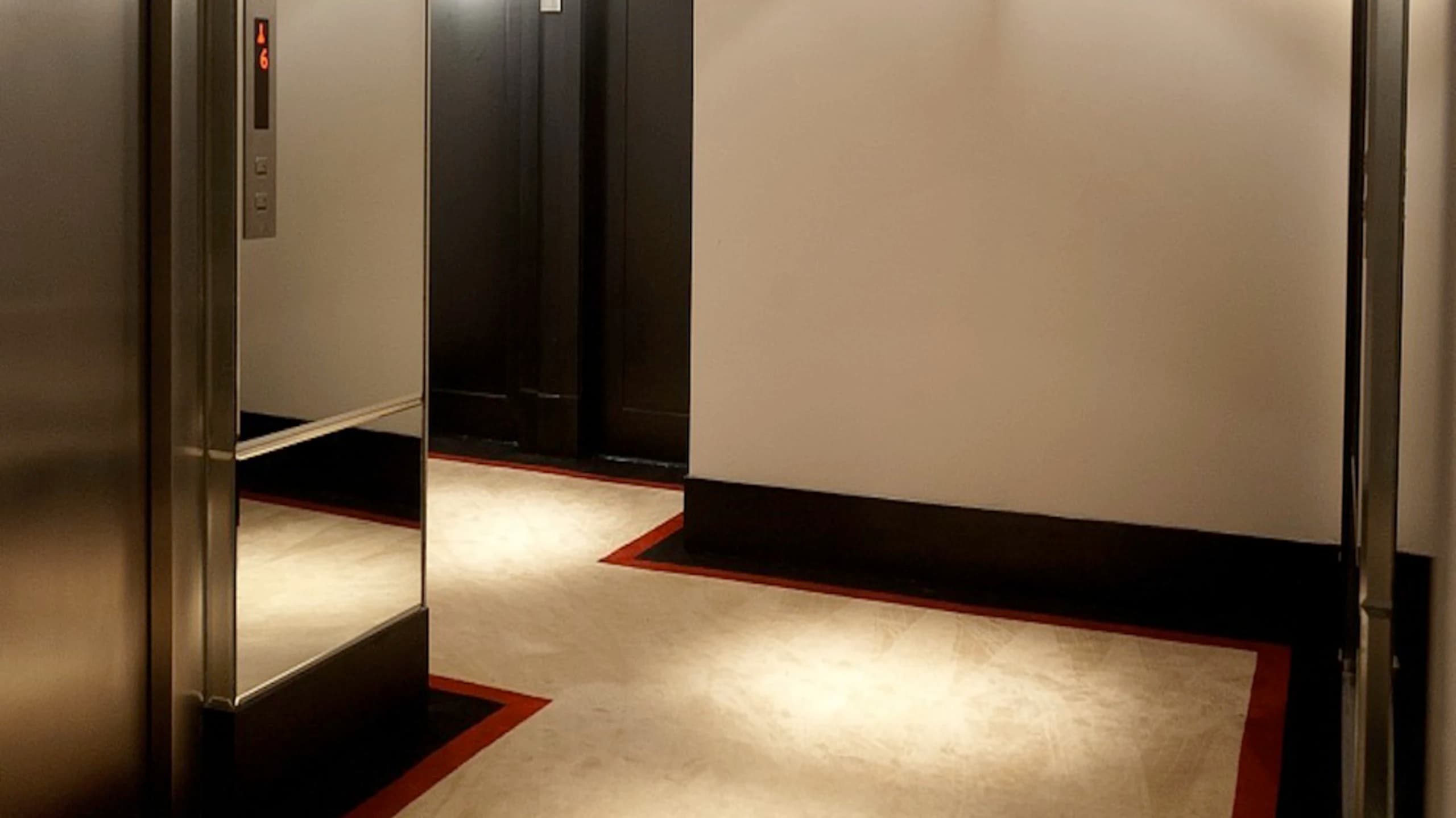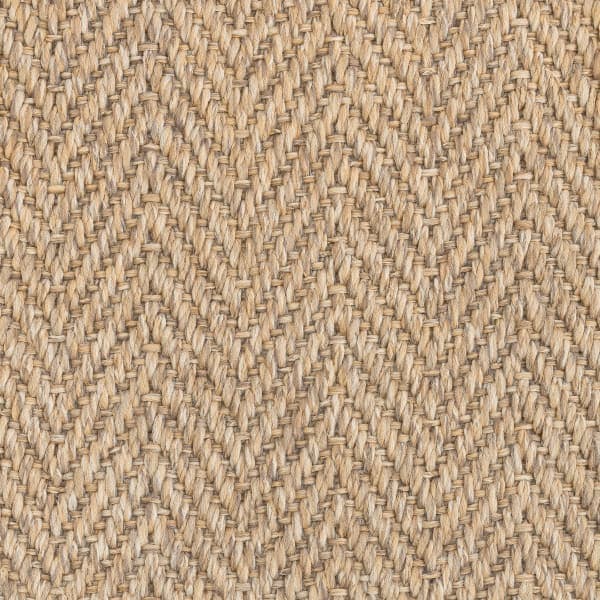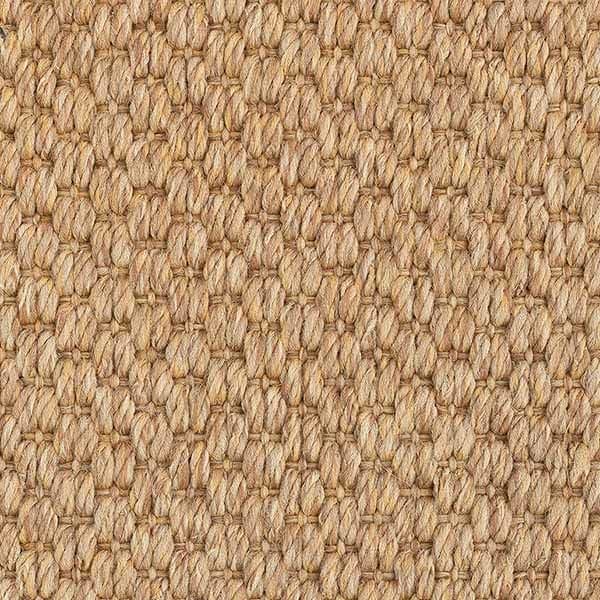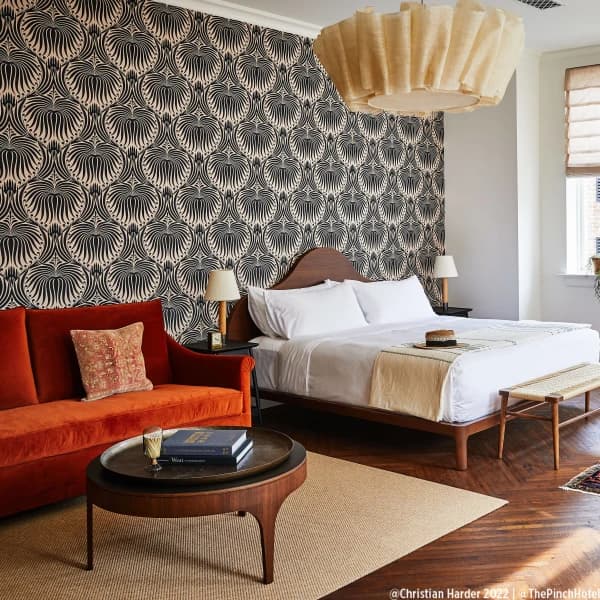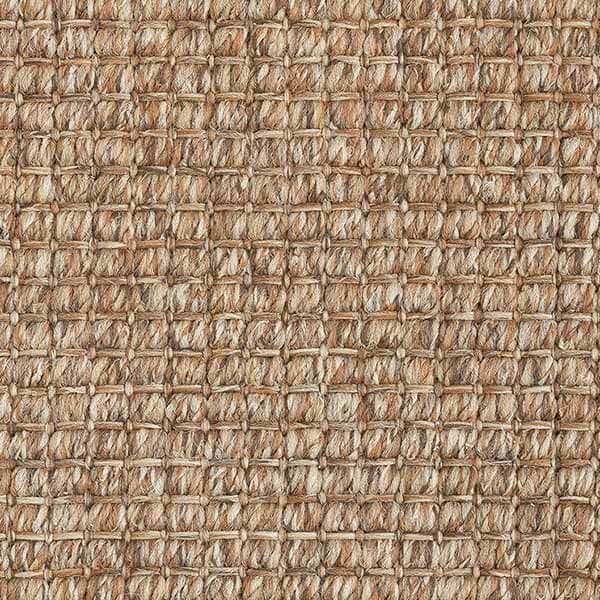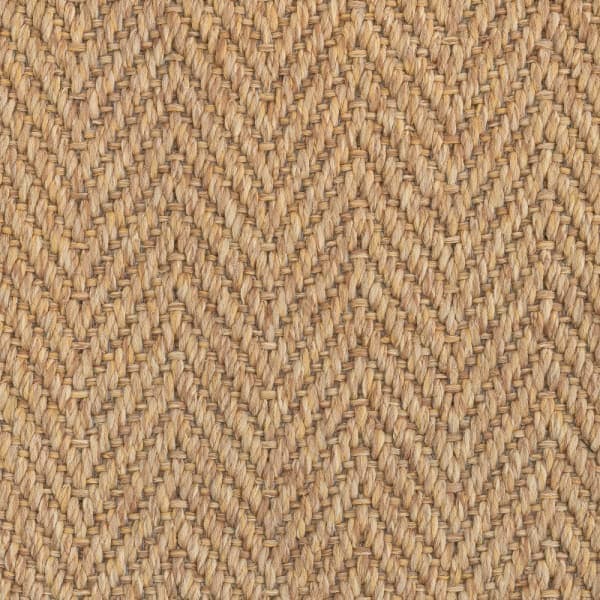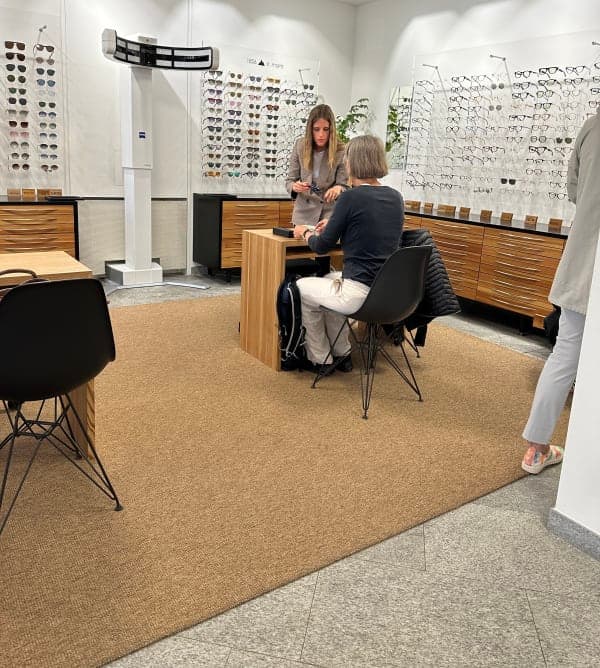Hospitality Rug Sizing Guide
Thoughtfully sized rugs can transform hospitality spaces—welcoming guests, guiding flow, and adding comfort in all the right places. This guide offers layout tips and design insights for every key area, from lobbies to guest rooms and beyond.
image: ASTORIA | mink @ Dunluce Lodge, Northern Ireland
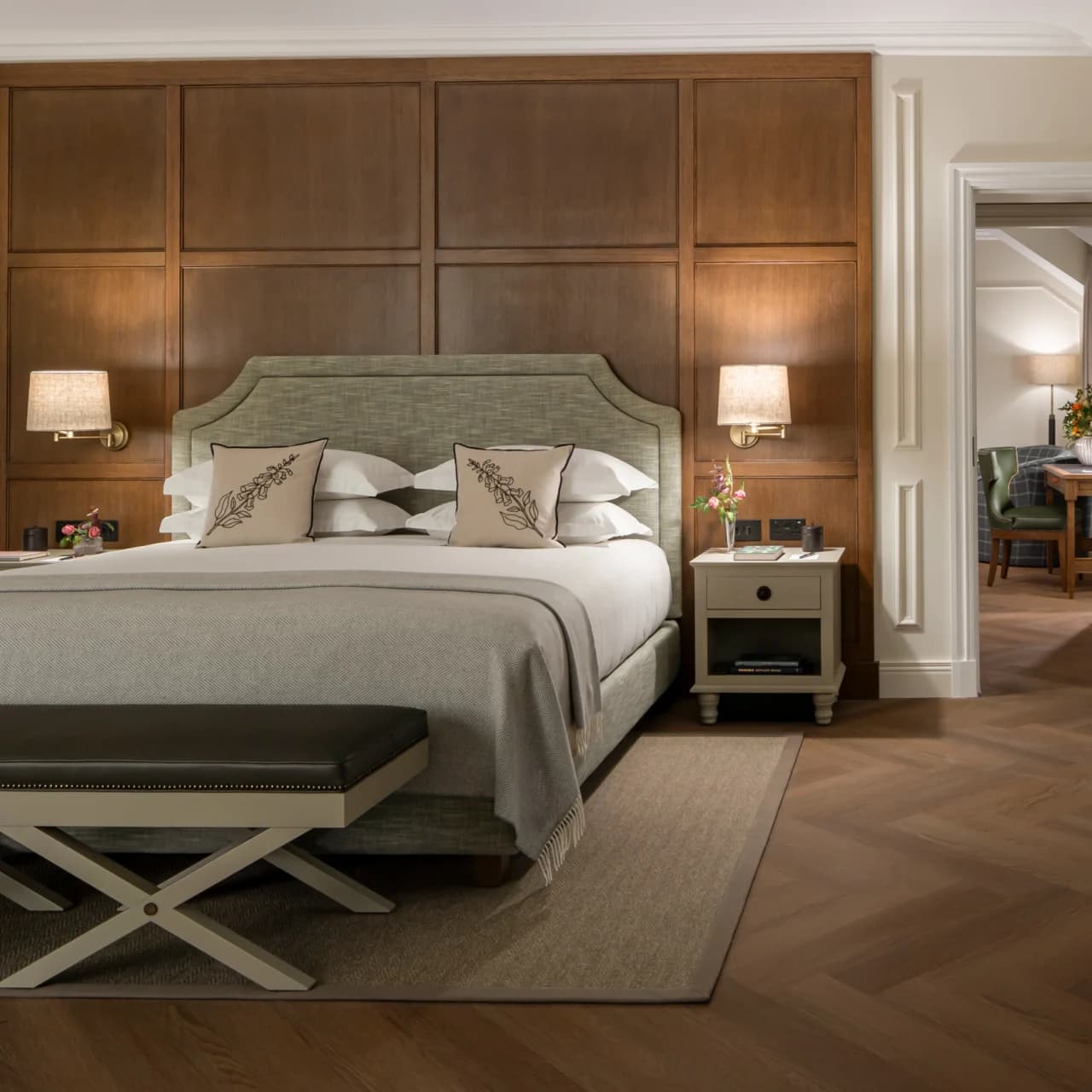
Acoustic Performance
Reduce noise in hospitality environments such as lobbies, guest rooms, and corridors with well-placed rugs. Soft furnishings like rugs absorb footfall noise and soften echoes from hard surfaces and create a calmer, more welcoming environment for guests. Visit our Hospitality Project page to read Case Studies, discover hospitality floor coverings, and meet our partners.
Brand Expression
Custom rugs are a powerful way to carry a property’s identity into the guest experience. Begin with a sturdy walk-off mat customized with your logo to welcome your guests. Continue expressing the overall design with unique organic-shaped rugs or bring the natural look in with faux-sisal rugs in lobbies and guest rooms.
Guest Comfort
In hospitality, comfort is as much about atmosphere as amenities. Area rugs lend a layer of warmth and intimacy to hospitality spaces and turn even expansive rooms into welcoming retreats. They add the “at home” feeling guests crave while signaling care and thoughtful design.
Sustainability + Performance
Many modern hospitality rugs combine high performance with eco-conscious design. Options made with regenerated yarns or recycled materials offer durability for contract use while reducing environmental impact, delivering both style and responsibility.
Budget & Design Flexibility
When budgeting for floor finishings or remodels, area rugs are easier to replace than a wall-to-wall installation, thereby reducing downtime, controlling costs, and helping to maintain a fresh look over the property’s lifecycle. Rugs also work across hospitality environments—from expansive lobbies to rooftop patios—allowing designers to unify the look while tailoring performance features (like outdoor durability or moisture resistance) to each location.
Simplified Planned Maintenance
Area rugs are easier for building maintenance teams to manage—they can be spot-cleaned, lifted for deep cleaning, and typically dry faster than wall-to-wall installations. Unlike fixed carpeting, rugs can also be rotated periodically to minimize visible wear in high-traffic zones. This flexibility reduces long-term maintenance costs and keeps spaces looking fresher for longer.
It should go without saying that a rug in a hospitality or public setting must meet the needs of the space as well as local building and safety regulations. Specifiers should select contract grade, durable materials that:
Meet fire safety standards (learn more about carpet classifications here)
Have built-in systems that resist staining as well as fading from UV light
Stand up to regular, heavy foot traffic
Are easy to maintain and clean
Have short, tight face yarns and a low pile
Need help finding the right material for your project? We have multiple resources, including The Best Materials for Commercial Rugs & Carpet and Heavy Duty Rugs For High Traffic Areas
ADA Compliance
In hospitality spaces, the final rug height—including pile, backing, pad, and border—must be under ½ inch (13 mm) to meet ADA requirements. This ensures smooth passage for wheelchairs, luggage carts, and housekeeping trolleys. In elevator lobbies and corridors, keeping rugs flush with the surrounding flooring helps prevent snags and trip hazards.
Rug Borders
Edge finishes impact both compliance and durability. A bulky braided border may exceed ADA height limits and catch luggage wheels, while a serged edge or the Infinity Edge offers a streamlined, compliant look. In busy hotel corridors or lobby seating areas, avoid cloth borders that soil or fray faster than the rug itself.
Material Matters
Low-pile, contract-rated rugs provide a stable, comfortable surface underfoot, helping guests feel at ease while also allowing smooth rolling for luggage, service carts, or banquet equipment in function spaces. Think synthetic materials like nylon, ECONYL®, rPET, and polypropylene.
Castor Chair Use
In business centers, meeting rooms, or executive lounges, ensure rug materials are approved for castor chair use. Rugs should be large enough for chairs to move freely without rolling off the edge, which can damage both the rug and the chair casters. Find styles that are suitable for castor chairs here.
Secure the Rug
Rugs in contract settings should be stabilized by large furniture, adhered to the subfloor with carpet tape, or paired with a non-slip pad. In high-traffic areas like hotel lobbies or resort promenades, avoid small, lightweight rugs—they’re more likely to shift and pose hazards. Instead, choose the largest, low-profile rug that fits the space to provide stability and coverage.
Common Applications
Hotel Lobbies & Reception Areas
Lobbies set the tone for a guest’s entire stay. Rugs here must balance wow-factor aesthetics with contract-grade durability and layout clarity. A well-placed rug defines zones, improves acoustics, and signals intentional design from the first step inside.
image: MEDINA | bark @sonder hotel
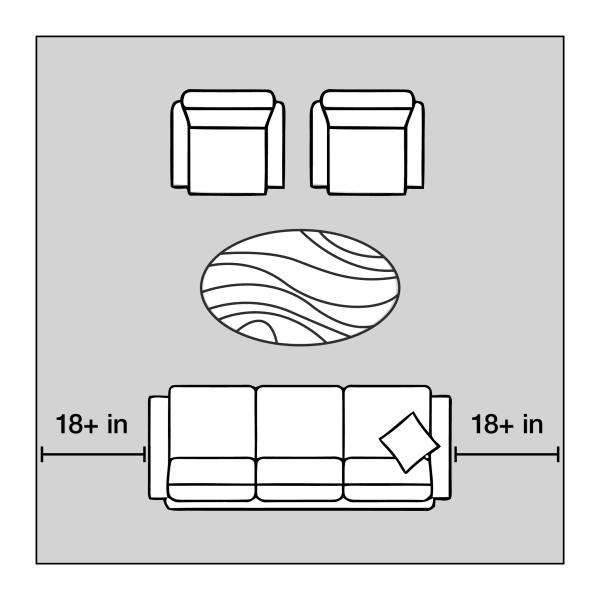
Frame the Area
Use rugs to visually anchor lounge furniture—all furniture should sit entirely on the rug with room to spare. Maintain about 18"-24" clearance on all sides for easy navigation in between pieces. This sets the tone—your guests can expect comfort and thoughtful design throughout.
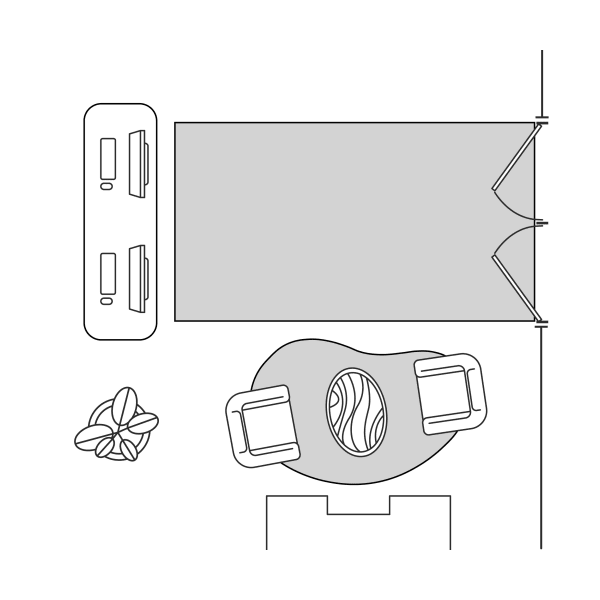
Define Zones
In larger lobbies, use multiple rugs to create separate zones—check-in, lounge, and concierge areas, for example. This provides structure without building physical dividers.
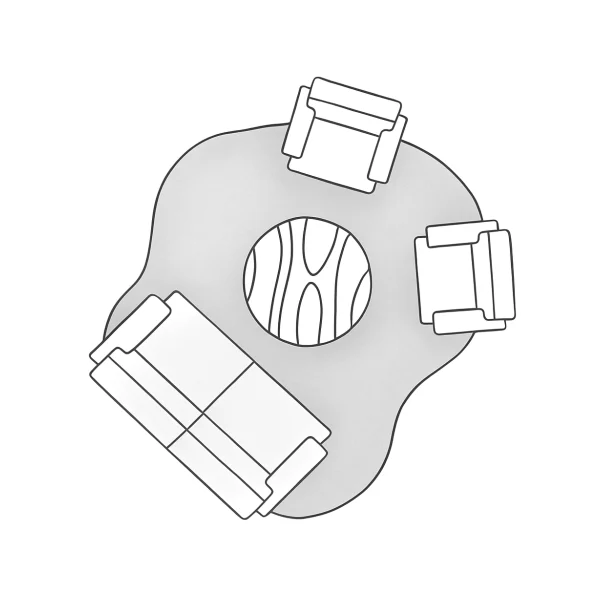
Make A Statement
A round or organic-shaped rug beneath a statement piece (like a floral arrangement) or a seating area creates a natural focal point, softening architectural details and drawing guests into the space. See link below for organic-shaped rugs.
Align with Architectural Details
The size of the rug should match the room's proportions as well as complement its architectural details. A hotel lobby rug should feel grand and be at least 2/3 the width of the room if it’s standalone. For uniquely shaped lobbies, use custom cut rugs to create seamless coverage that flows with the room’s layout. And align rugs with architectural cues—like lighting grids or window mullions—to make the space feel ordered and intentional.
Leave Room for Doors and Flow
Don’t block entry flow. Rugs should start 12–24” inside the threshold or vestibule and avoid any door swings. For safety and ADA compliance, use low-pile, firm-backed rugs.
Avoid This Mistake
→ Using residential-quality materials. Don't be tempted to place a bespoke, non-contract grade rug in a busy lobby—it will likely soil, crush or curl within weeks. Always choose commercial-grade, large-format rugs that suit the scale of the space.
Guest Rooms
Guest rooms require rugs that combine comfort underfoot, safety, and style while withstanding daily turnover and cleaning. The right sizing supports both the guest experience and operational efficiency.
image: MEDINA | mink @Stari Grad Hotel Dubrovnik
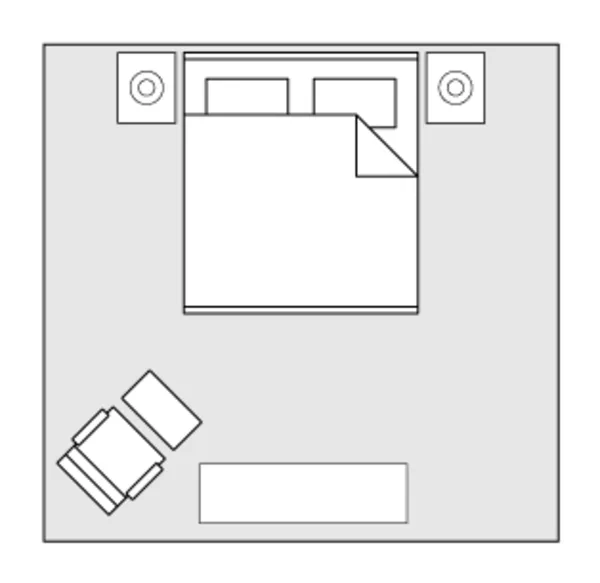
Large Hotel Rooms
In larger guest rooms, we recommend placing all furniture—bed(s), nightstands, desk, and lounge seating—on one large rug. It should extend 18–24" beyond the bed’s sides and foot, ensuring guests step onto a soft surface from any angle.

Smaller Rugs in Guest Rooms
If the room is smaller or the rug is not large enough to hold all furniture pieces, tuck the rug under the bed just up to the nightstands.
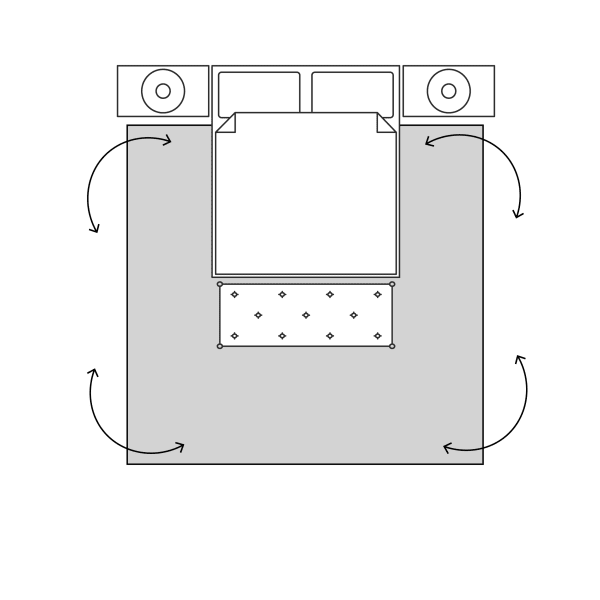
Plan for Rotation
Unlike wall-to-wall installations, area rugs can be rotated periodically to even out wear from foot traffic or furniture impressions. This extends their useful life and lowers lifecycle maintenance costs.
Carry The Brand Story
Rugs can be a subtle yet powerful way to carry a hotel’s brand identity into the guest room. By integrating colors, motifs, or textures that echo the property’s overall design, they create cohesion between public spaces and private retreats. This attention to detail elevates the guest experience, making the room feel intentional, curated, and consistent with the brand’s story.
Avoid This Mistake
→ Placing a rug only at the foot of the bed. This can look undersized and doesn’t provide comfort where guests need it most—when stepping out of bed. Plus, smaller rugs are more likely to have beat-up edges and create tripping hazards.
Corridors & Hallways
Corridors in hospitality settings aren’t just transition zones—they’re an opportunity to reinforce brand identity. Well-planned rugs are a design element that improves acoustics, provides comfort underfoot, and guides guests intuitively through the space.
image: tretford® Roll | hallway runner
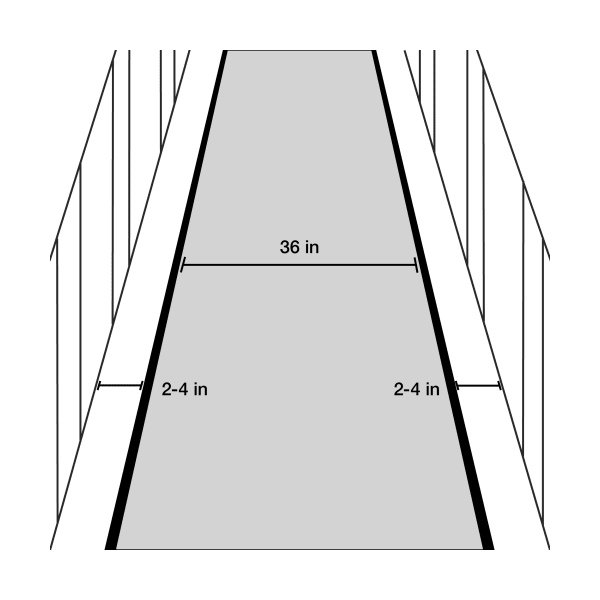
ADA Compliant Widths
Ensure rugs allow for the required clearance—minimum 36" wide for ADA compliance, though 42–48" is preferred in hotels for easier luggage passage.
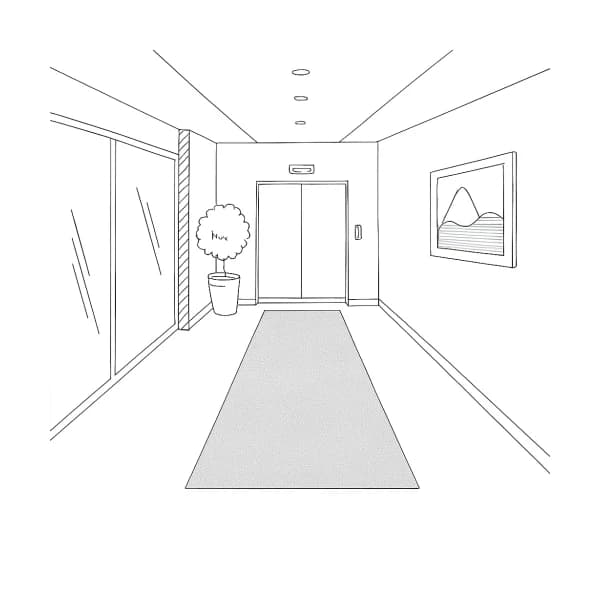
Align with Lighting & Architectural Features
Keep hallway runner rugs in visual alignment with overhead lights, soffits, or artwork for an orderly and intentional look.
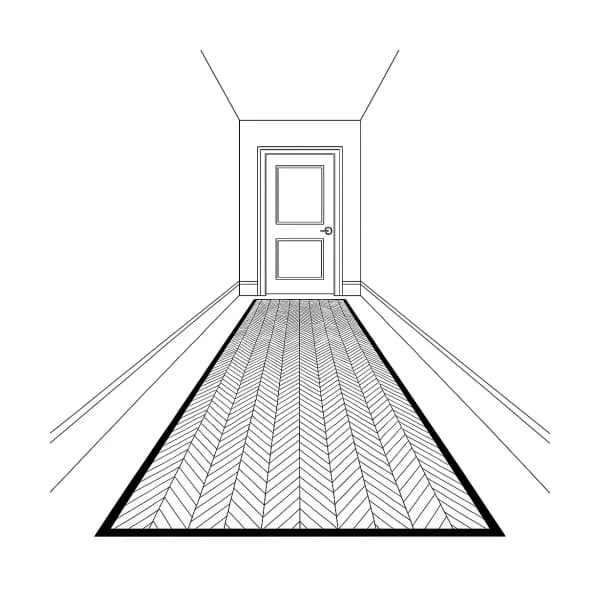
Visual Rhythm
Pattern repeats help break up the visual length of a corridor, preventing monotony and adding a sense of direction.
Consider Custom Shapes for Turns or Intersections
Custom-cut runners are ideal for angled corridors or intersections, ensuring a seamless fit without awkward gaps or overlaps. Beyond looking polished, continuous runners are also safer than piecing together smaller rugs, which can shift or create tripping hazards. For more on ordering l-shape or angle-cut rugs, see our Irregular Shaped & Custom Cut Rugs guide.
Avoid This Mistake
→ Specifying residential rugs in high-traffic corridors. Residential rugs break down quickly under rolling luggage and constant foot traffic, showing crushing and wear in visible lanes. Many also fail to meet hospitality fire or slip-resistance standards. Instead, choose contract-grade rugs with commercial backings to prevent shifting or curling. Flatweave or tight-loop constructions offer the durability needed for heavy use while reducing tripping hazards.
Outdoor Spaces: Patios, Rooftops & Pool Decks
Outdoor hospitality spaces extend the guest experience beyond the walls of the property. Rugs here must handle exposure to sun, moisture, and temperature changes, while still delivering the same comfort, design cohesion, and space definition as indoor areas.
image: PATIO | poolside area rug
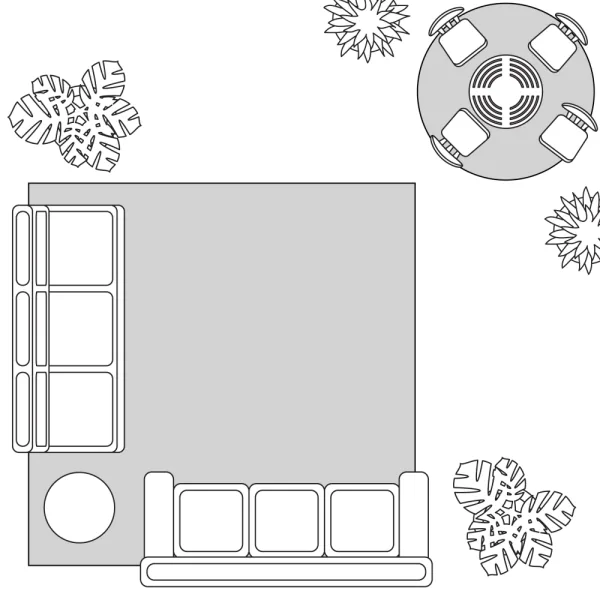
Create Distinct Zones
On rooftop terraces or large patios, use multiple rugs to differentiate guest experiences—cocktail seating vs. sunbathing vs. dining—while maintaining a cohesive look.
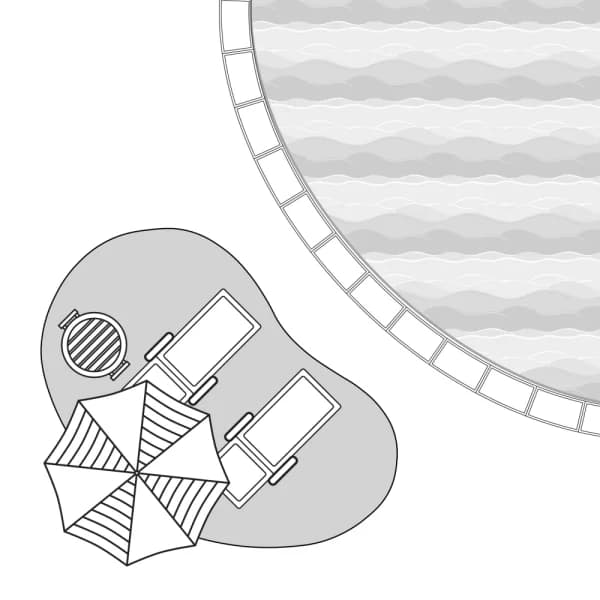
Use Shape to Fit Unique Layouts
Rounded or organic shapes can soften hard-edged architecture like pool perimeters, while custom cuts ensure coverage around planters, railings, or built-in seating.
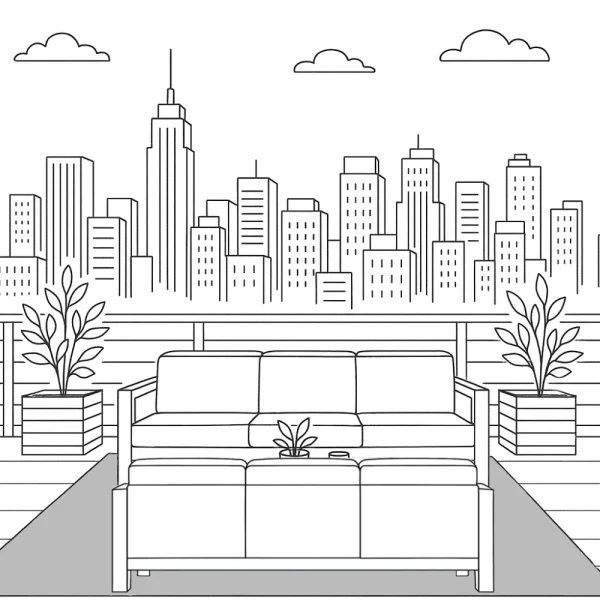
Frame the View
On rooftop terraces or sea level pool decks, position rugs so that the seating they anchor is oriented toward key sightlines—city skylines, ocean horizons, or landscaped gardens—to subtly draw guests toward the view.
Choose Performance Materials with Design Integrity
Select UV-stable, water-resistant fibers like solution-dyed polypropylene or r-PET that resist fading, mildew, and mold even in direct sunlight or high humidity. Look for performance outdoor rugs that maintain a refined look while performing in outdoor conditions to keep surfaces safe.
Extend the Indoor Brand Story Outdoors
Carry brand colors, patterns, or textures from the interior spaces to outdoor lounges, ensuring a seamless guest journey that feels intentional and curated. And maintain the luxury feel with large-scale rugs that reinforce the scale of the space and prevent furniture from feeling scattered.
Avoid This Mistake
→ Failing to Secure the Rug Outdoor rugs in hospitality settings must be anchored—either by heavy furniture, discreet perimeter weights, or non-slip pads—especially in breezy rooftop or poolside locations. Small, lightweight rugs are prone to shifting, which can cause tripping hazards and disrupt the guest experience. Always opt for the largest, low-profile rug that fits the space for both safety and aesthetic presence.
Bar & Lounge Areas
Lounge and bar areas are social hubs where guests gather to relax, meet, or celebrate. Rugs here must balance style, durability, and acoustics, creating an inviting atmosphere while handling the occasional spills.
image: ASTORIA | bark | The Library @The Hero Maida Vale, London

Choose Patterns that Hide Wear
Bars and lounges are prone to spills and scuffs. Multi-tonal patterns or textures and darker colors help disguise minor marks between regular cleaning and maintenance.
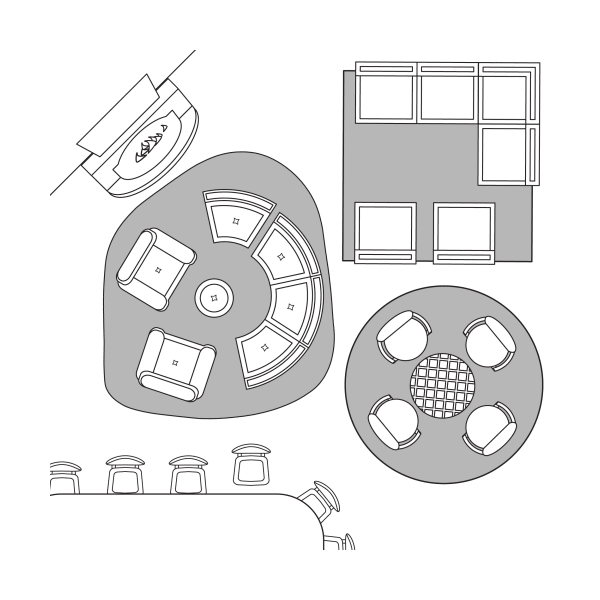
Highlight Signature Seating
Rugs can quietly signal exclusivity. A distinct rug color, pattern, or shape under a specific seating cluster can draw the eye and subtly communicate that it’s a premium area—without signage or overt barriers.
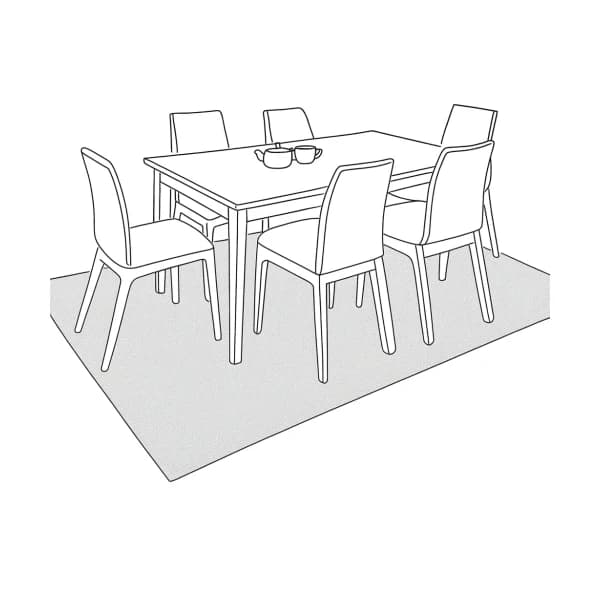
Opt for Low-Pile for Easy Service Access
Low-pile rugs make it easy to move chairs and bar stools without snagging, and allow for quick spot cleaning during service.
Support Service Flow
Rugs should enhance, not hinder, the efficiency of food and beverage service. Place rugs so servers have direct, unobstructed walkways between the bar and guest tables, preventing spills and enhancing efficiency. In a bar or lounge, place rugs so that they anchor guest seating but leave clear, rug-free lanes from the bar to tables. This reduces the chance of trip hazards and ensures servers aren’t maneuvering trays or carts over uneven surfaces.
Avoid This Mistake
→ Choosing style over function in spill-prone zones. In bars and lounges, rugs face constant exposure to food and beverage service. A delicate fiber or light color may look beautiful at install but will be costly to maintain and quick to show wear. Opt for darker colors and performance materials.
Transitional Spaces & Elevators
Transitional spaces such as elevator lobbies, vestibules, and narrow pass-throughs are compact but high-traffic areas. Rugs here must balance safety, precision fit, and visual continuity while withstanding concentrated wear.
image: Magnifika 9 | Custom Cut Rug
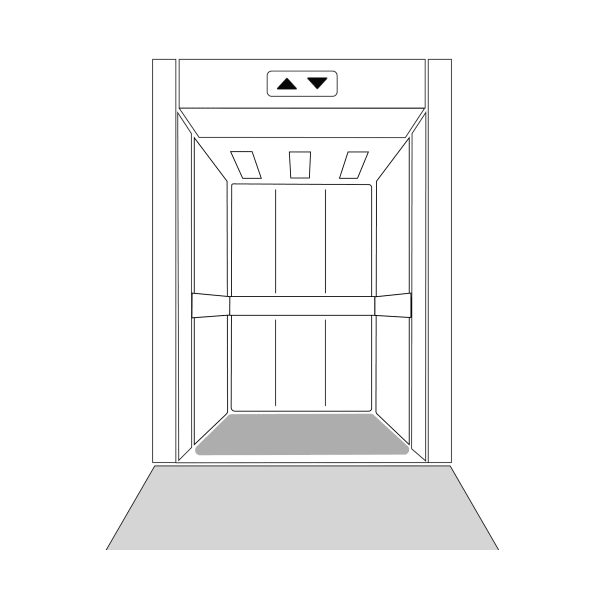
Templates for Tight Fits
Template-based cutting ensures a perfect fit in small or irregular spaces and prevents edges from curling or catching. You can mirror the shape of the space to create balance and a more intentional design feel (for e.g., a square rug in square vestibule or a round rug in circular lobby).
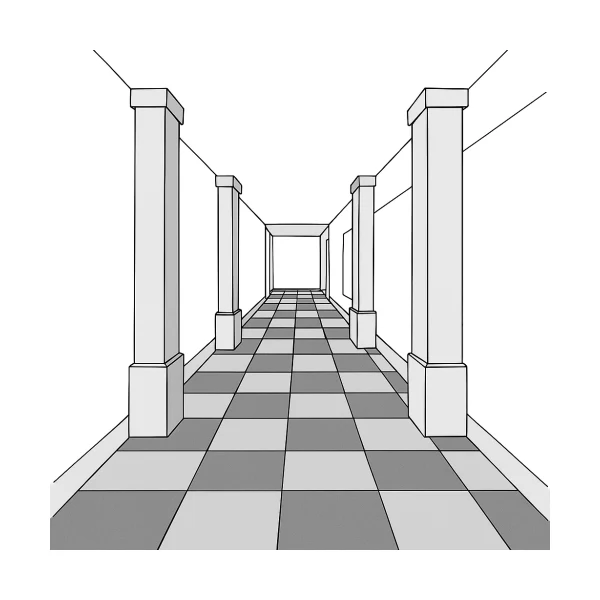
Carpet Tiles + Flexibility
Modular flooring options like carpet tiles are ideal for busy transitional spaces. Individual tiles can easily be replaced as needed. Carpet tiles are easy to cut for awkward spaces, easy to install, and allow for creative pattern layouts that subtly signal direction or define zones.
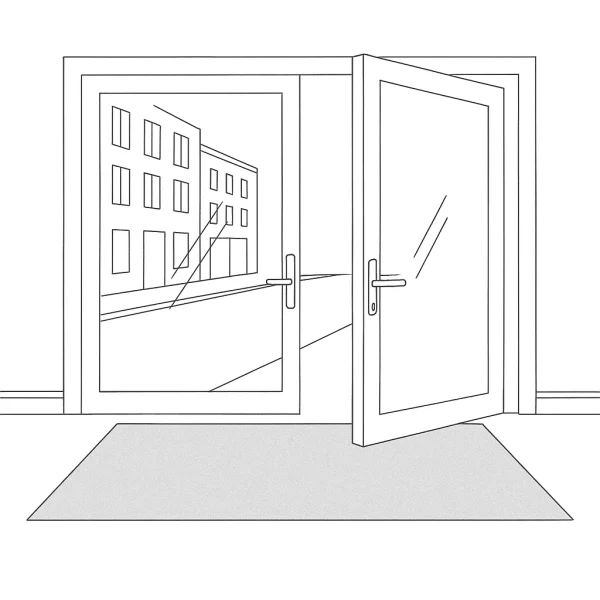
Allow for Door Clearance
Maintain enough space for doors to swing open fully without dragging across the rug, which causes premature wear and functional issues. Low-pile rugs are the best choice for entryways, corridors, and other areas where doors open onto the rug surface.
Select Ultra-Durable, Low-Pile Fibers
In transitional hospitality spaces, performance and stability go hand in hand. Choose dense, low-pile constructions that resist crushing and backings that can handle high-friction from rolling luggage and foot traffic. For maximum stability, anchor rugs under heavy furnishings, affixed with non-slip backing, or fully adhered to the floor.
Avoid This Mistake
→ Using an Inexperienced Installer for Template-Based Cuts Even a perfectly fabricated rug will fail if the template is taken inaccurately. Transitional spaces—like elevator cabs and irregular vestibules—require precise tracing of curves, thresholds, and clearances. An inexperienced installer can misalign patterns, leave gaps, or create safety hazards. Always partner with installers experienced in luxury or contract-grade projects to ensure a flawless, secure fit.

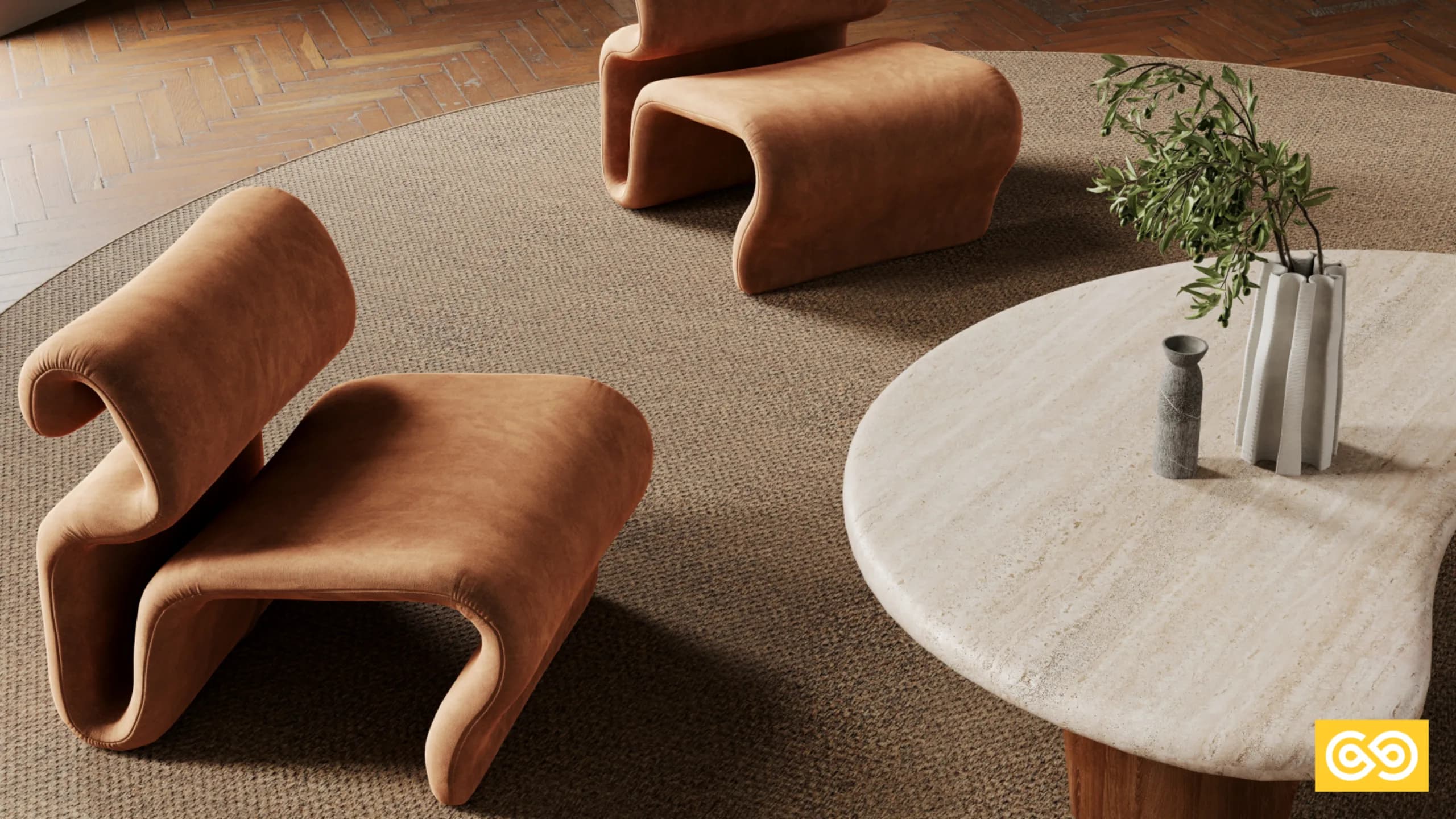

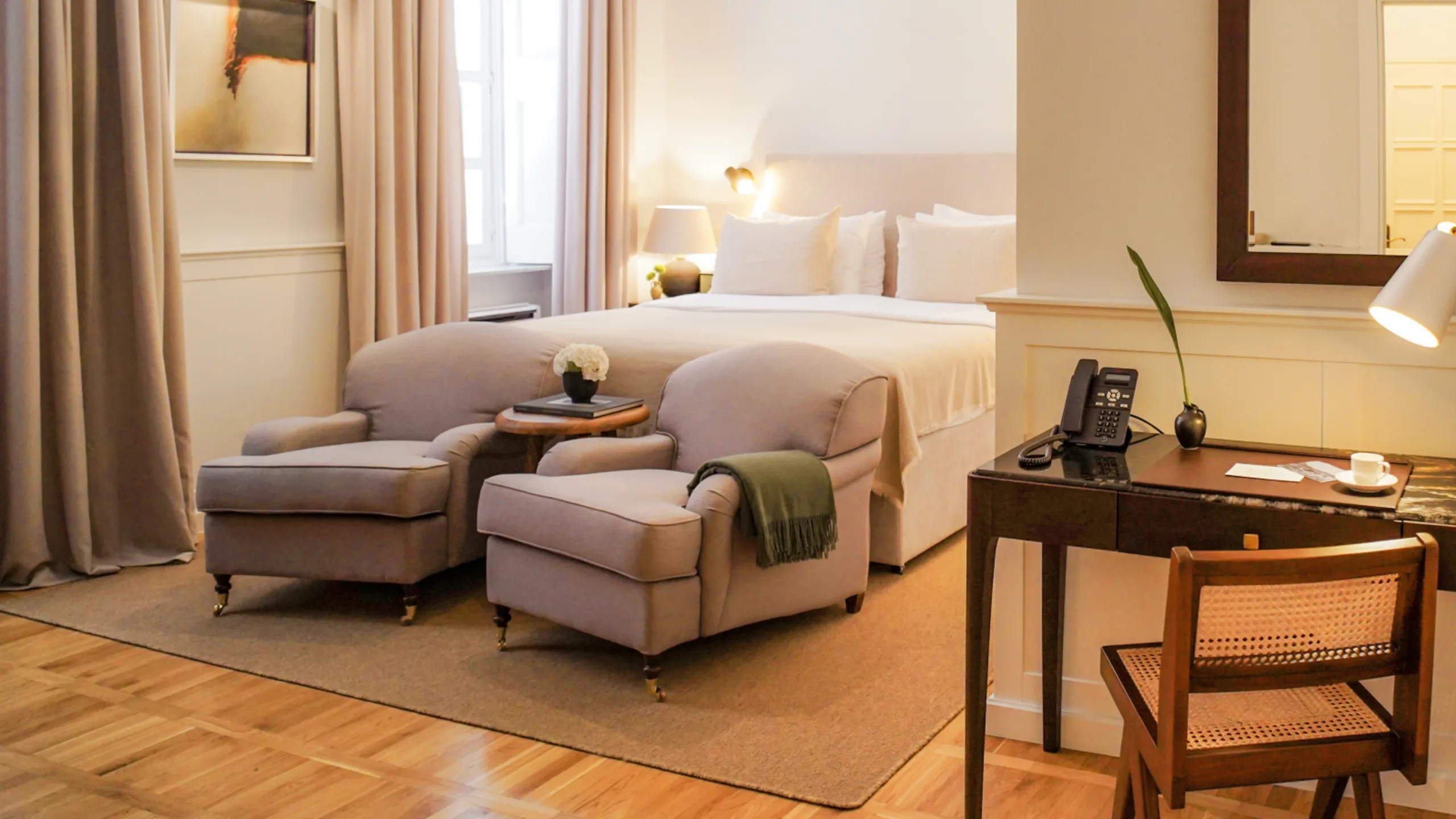
%3Bmultiple_true%2Ff_auto%2Fq_auto%2Fw_2560%2Fv1664479860%2FFlooring%2FVendors%2FCWD_Tretford%2FBeauty_Image%2Ftretford_Treppe_0909_c4bsi7.webp&w=2560&q=75)
%2Ff_auto%2Fq_auto%2Fw_2560%2Fv1714078949%2FFlooring%2FVendors%2FLimited_Edition%2FBeauty_Image%2FPatio_Mineral_Red_MD_c_vtwkoj.webp&w=2560&q=75)

